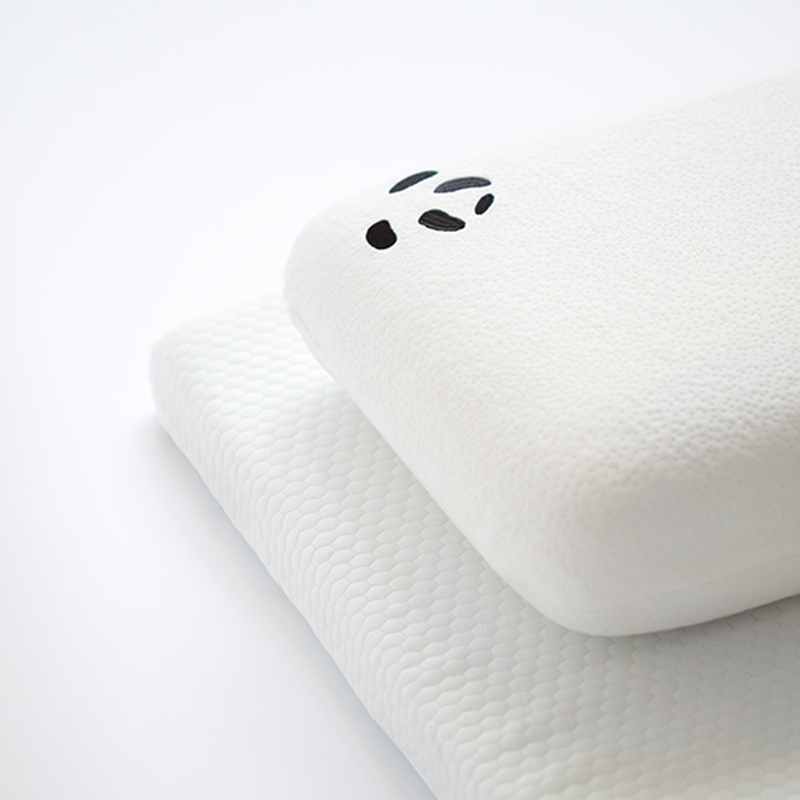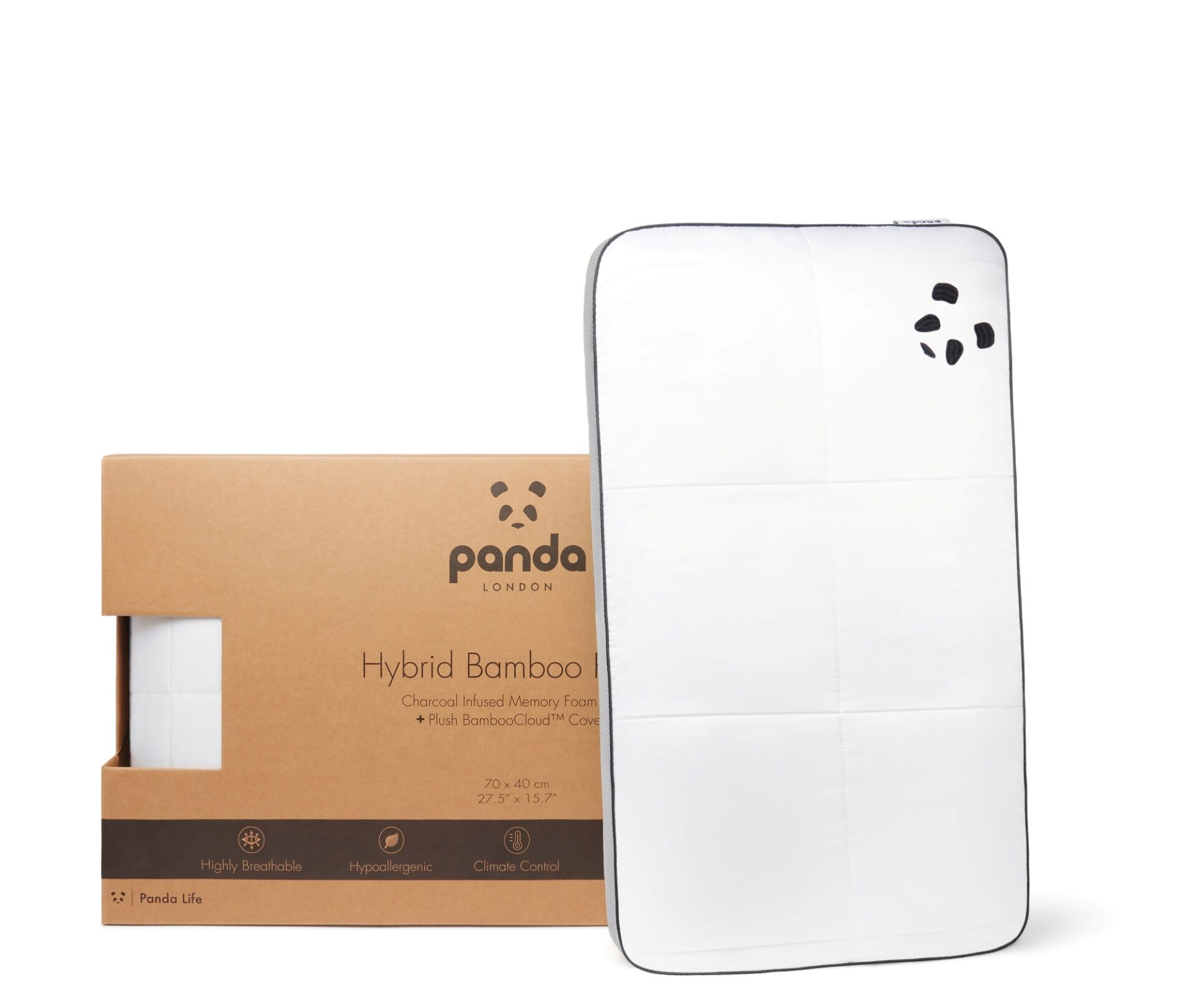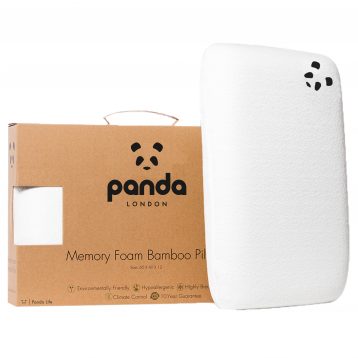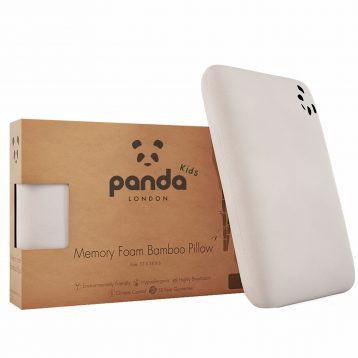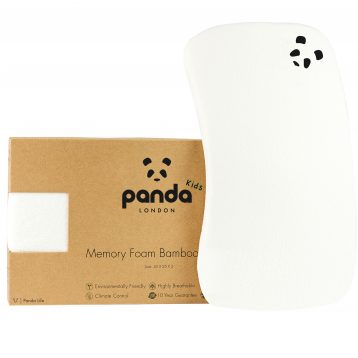Memory Foam vs. Feather Pillow: Which One Should You Buy?
Last updated on January 24th, 2024 at 01:35 pm
Choosing the best pillow is a key step in perfecting your sleep routine – for your head to stay cool and your body to be well supported, your pillow must be right for you. There are two main varieties to choose from: memory foam and feather. It is important to know the properties of each and which is the one for you!
Memory Foam Pillows
Memory foam pillows are made from viscoelastic foam, which contours to the shape of your head and neck, offering customized support. They adapt to body heat and pressure, providing comfort and reducing pressure points. These pillows are known for their durability and can help alleviate neck and back pain, making them a popular choice for improved sleep quality.
What are the benefits of a memory foam pillow?
Among the benefits of memory foam pillows is their incredible support: because they have more firmness, they align your neck, shoulders and spine. You’re less likely to find yourself sinking! You’ll find memory foam is strong enough to relieve pressure from your head and neck.
Because of the density of memory foam, it will contour to your shape – this further enhances head and neck support. This helps to relieve a lot of pain people experience while sleeping. The density often means that there is little room for allergens and bacteria to grow; having a hypoallergenic pillow improves your sleep quality, allowing you to breathe easier and drift off free from irritation.
Memory foam pillows also have a long life span; because of the way they are made, they are durable and last longer than others. This is better for your wallet, as it needs replacing less often, and better for the planet as it leads to fewer pillows in landfill!
Factors to consider when buying a memory foam pillow
When buying yourself a memory foam pillow, look at how dense and firm you want it. This is often down to personal preference – a mid-level of firmness is perfect for many people, but depending on your sleeping position, you might want it more or less firm. Trying in-store or buying one with a trial period is a great way to determine how firm and dense you like it to be. A pillow should be breathable, and you should also opt for a cooling one: this helps you sleep better at night because the fresh side feels much nicer! Look for memory foam pillows with covers made from a breathable material like soft and thermoregulating bamboo.
Memory foam pillows have different sizes and shape options; some are curved to allow for even better body contouring, while many are in the typical shape. You can also get different lofts or heights. Again this comes down to personal preference, so it’s worth considering what you like or don’t like.
Finally, in terms of factors to consider when choosing, look at the maintenance and care instructions. You don’t want a pillow that will make your life more difficult – so opt for one with easy care and maintenance guidelines. Memory foam shouldn’t be put in the washing machine, so pillows with easily removable covers are perfect for increasing the pillow’s longevity.
Make bedtime perfect
Shop our Memory Foam Pillow
Feather Pillows
Feather pillows are filled with duck or goose feathers, offering soft, pliable comfort. They conform to the head and neck, are lightweight, and can be fluffed for desired support. Feather pillows are less firm than others and may require regular fluffing. They are favored for their natural softness.
What are the benefits of feather pillows?
You’ll find that a feather pillow is naturally very soft, with little to no resistance, as your head sinks into it at bedtime. As feather pillows are generally quite thick, they have a naturally high loft. However, they can lose their loft over time as the feathers start to flatten inside.
Feather pillows are also more breathable than those made from synthetic material, with increased airflow between the feathers. And because of their soft nature, they are really malleable – meaning you can easily squish and adjust your pillow to make it perfect for you.
Factors to consider when buying a feather pillow
Again, the choice is often down to personal sleep preferences. However, if you’re looking to drift off easily, you need to ensure the quality and fill power of the feathers inside the pillow. Cheaper options tend not to have as many feathers in them, meaning they’re not as soft or supportive! You can also purchase comfortable pillows, which are a blend of feather and down – many people think these are the same, but down actually refers to the layer of protective fibres found underneath a bird’s feathers. A pillow offering a mix of the two is a great option for comfort, support and softness.
Look at the casing and construction, too – what is the cover made of, can it be removed at all, and how well put together does it look? You want a long-lasting, durable pillow, so this is an important point to consider.

Memory foam vs. Feather pillow: The comparison
No pillow-buying guide would be complete without a direct comparison between the two types, so it’s important to look at how memory foam and feather pillows measure up against each other.
Support and comfort
Both types are comfortable and supportive, but the density and contouring of a memory foam pillow – which moulds to your shape – is often much more comfortable, especially when you’ve been using it for a couple of weeks. Because of how they are designed, memory foam pillows offer much more support with optimum head and neck alignment.
Allergies and hypoallergenic properties
Feathers can often cause an issue for those with sensitive skin and allergies; if the quality of the outside isn’t particularly great, the feathers can poke through, leaving you irritated and itchy. This issue doesn’t exist with a memory foam pillow, which (due to its density) often leaves little room for allergens like dust mites to get in!
Temperature regulation and breathability
Memory foam often retains the heat, whereas feather pillows generally don’t, but if you opt for a memory foam pillow with a breathable cover like bamboo, then you’ll see cooling benefits too. Bamboo is thermoregulating, which makes it the perfect partner for dense memory foam. Again feather-filled ones offer more breathability in general due to the spaces between the feathers themselves, but if you like the benefits of memory foam, choosing a pillowcase made from a breathable material can help.
Durability and longevity
Memory foam definitely comes out on top in terms of being long-lasting and super durable; feather ones lose their shape and comfort over time, and the feathers inside can often become loose and fall out. This leads to your pillow becoming flat and not offering you the support and comfort you deserve, whereas memory foam lasts much longer. This means with the proper care, yours will serve you for years to come, leading to less waste and a healthier bank balance!
Choosing the right pillow for you
Picking your perfect pillow is based on what works for you – do you sleep on your back, side or front? Back and side sleepers tend to prefer memory foam, while front sleepers might like feather pillows more. Personal considerations are important too: if you have allergies, memory foam is probably a better choice as it is more hypoallergenic than feathers. The same goes for itchy and sensitive skin because feathers can irritate. Look at your budget, too. Pillows made from memory foam might be more expensive to begin with, but they are usually better value for money because they last longer.
Should you buy a memory foam or feather pillow?
Purchasing a pillow is generally down to personal preference; memory foam and feather pillows are both great in their own way, but you might find one which works better for you. Whether you need a specifically hypoallergenic pillow to relieve symptoms of allergies or you’re looking for pressure relief to avoid an achy neck in the morning, making an informed decision is really important. Supportive pillows are key to a great night’s sleep, which will help improve your physical and mental health!
FAQ
What is the main difference between memory foam and feather pillows?
Last updated on January 24th, 2024 at 01:35 pm
Memory foam pillows are made from viscoelastic foam that conforms to your head and neck, while feather pillows contain natural feathers for a softer feel.
Which pillow is better for neck support: memory foam or feather?
Last updated on January 24th, 2024 at 01:35 pm
Memory foam pillows are known for providing excellent neck support by contouring to your head and neck’s shape, while feather pillows may be softer but offer less support.
Are memory foam pillows hypoallergenic?
Last updated on January 24th, 2024 at 01:35 pm
Yes, many memory foam pillows like bamboo memory foam pillows are hypoallergenic and resistant to dust mites and allergens, making them a good choice for allergy sufferers.
Do memory foam pillows retain heat?
Last updated on January 24th, 2024 at 01:35 pm
Some memory foam pillows can retain heat, but many modern versions, like bamboo memory foam pillows, are designed with cooling features to dissipate heat and keep you comfortable.
Which pillow is better for pressure relief: memory foam or feather?
Last updated on January 24th, 2024 at 01:35 pm
Memory foam pillows are generally better at providing pressure relief, especially for areas like the neck and shoulders, due to their contouring properties.
Explore our range:
Hybrid Bamboo Pillow
Rated 5 out of 5£89.95Original price was: £89.95.£76.46Current price is: £76.46.Memory Foam Bamboo Pillow
Rated 4.96 out of 5£44.95Original price was: £44.95.£38.21Current price is: £38.21.Kids Memory Foam Bamboo Pillow
Rated 5.00 out of 5£34.95Original price was: £34.95.£29.71Current price is: £29.71.Baby Memory Foam Bamboo Pillow
Rated 4.95 out of 5£24.95Original price was: £24.95.£21.21Current price is: £21.21.

